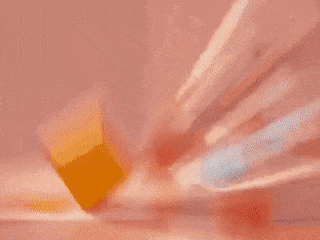Cinema 4D Journey

The course is for those who are ready to learn every C4D tool in more detail to be able to deal with various Cinema 4D tasks without searching for tons of tutorials.


The course is for those who are ready to learn every C4D tool in more detail to be able to deal with various Cinema 4D tasks without searching for tons of tutorials.

If you have already worked with Cinema 4D and you want to master this tool in greater detail, you are in the right place. This course will make you understand the core aspects of Cinema 4D much better and will teach you to use the tools you are already familiar with in a new way. There are a lot of nuances from basic modeling skills to gamma correction in rendering that can greatly improve your works. Learn them in your own Cinema 4D Journey.
This course is also suitable for Cinema 4D beginners who are ready for large amounts of difficult information and complex tasks.
19 lectures / 12h+
We’ll get started with the Cinema 4D interface doing an example project. We’ll create and render a simple composition and get to know primitives, navigation and scene management.

We’ll learn the tools and the main principles of polygonal modeling. You’ll get familiar with subdivision surface. We’ll talk about the pros and cons of different types of topology.

We’ll create our first polygonal model. We’ll get some real experience in using poly pen and other tools that make the modeling process more effective.

We’ll get to know the concept of parametric coordinates and learn how to make a UV conversion with minimum effort. We’ll put our new knowledge into practice making a UV mapping of our model.

The final stage of our project. We’ll get a cool and stylish packshot. We’ll get started with the process of creating studio surrounding, we’ll set the lighting sources, make an animation and render the sequence.

Mograph module overview. Mograph became an integral part of Cinema 4D. We are going to show you its functions and specific features on some simple examples.

Explore the Mograph module from the inside. Get to know the procedural modeling, make a basic crowd generator and learn other unusual ways to use Mograph.

An overview of built-in tools for rigid bodies and tissues simulation. Specific features of the bullet solver. Common mistakes users make.

Put your knowledge about the dynamics into practice: create a simple loop for Instagram.

Get to know the Hair module. Explore its specific features and main functions. Learn how to use it for the object scattering.

We will get a basic introduction to JavaScript language that is enough to start making your own simple scripts. Xpresso won’t scare you away anymore. This node programming language will help us create a custom tool for a growing ivy.

Overview of the tools that help creating an animation. We’ll create and animate a simple rig.
Working with the camera is one of the most important aspects of the whole movie-making process. And it means a lot in computer graphics too. Explore the principles of creating a camera rig and learn how to use built-in tools like camera morph and motion camera.

Cinema4D constraints system overview. U-joint node rig

Deformers can be used as a great tool for correcting mistakes in your animation or adding some final polish. Learn some helpful deformers. Smoothing, jiggle, collision, tension tag.

Get to know the PBR workflow.

Learn more about light sources. We’ll show you different light setups and possible ways to light a scene.

Combining 3D with real-life footage is one of the core challenges of computer graphics. Get to know the principles, as well as C4D tools that will make it easier.

Sketch & Toon module is one of the best of its kind and we won’t overlook it. Create a short video in classic cartoon style.


prepare yourself to participate in our next collaboration!

If unhappy with the course, you can request a refund within 14 days after the purchase and get every cent back. Course purchased before the actual starting date refund can be requested up to 14 days after the first installation. Note: not applicable if purchased with a discount coupon
We often send free tutorials, updates and discounts on future courses. Jump on board, you will love it.